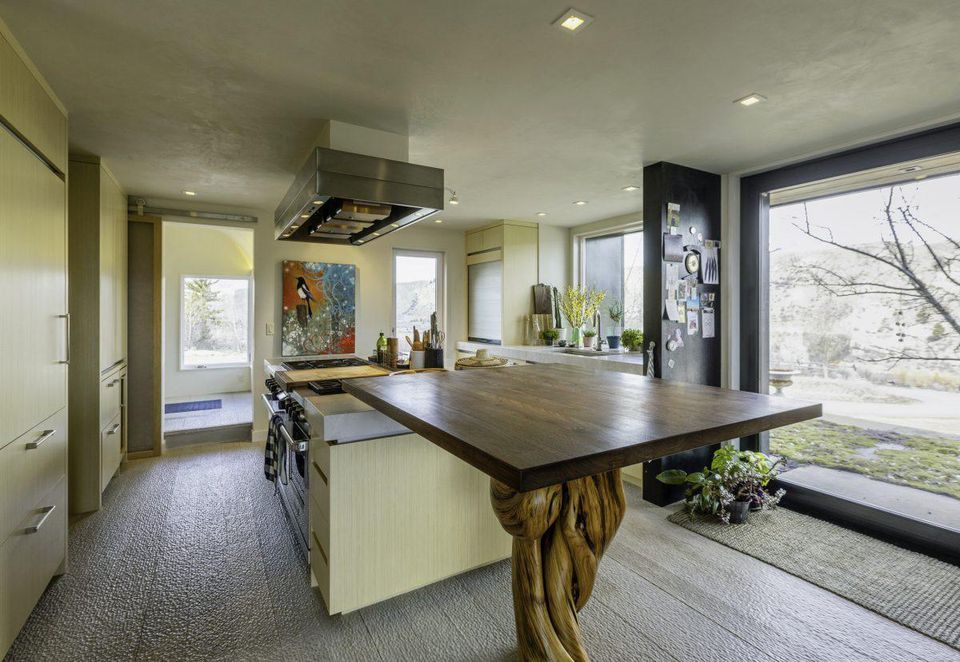Green ‘living walls’ bring the outside in and create a healthier atmosphere in a home / Photo: Dig This Design.
If you’re a follower of architectural trends, you’ll no doubt be aware of the importance of sustainability today to a building’s success. However, while the focus has been largely centered on the structures themselves, attention is now increasingly turning to the health and wellbeing of their occupants. One of the fastest-growing sectors of the building industry is that of wellness architecture, reflecting an increasing interest in the impact our surroundings have on us, and it is now influencing both residential and commercial designs, as well as building products, real estate development and real estate sales.
Wellness is now a familiar term, and many of us now understand the role certain factors play in terms of our health, and how our lifestyle choices affect how we feel both physically and mentally. But while issues such as clean eating and mindfulness have tended to dominate the conversation, the concept of wellness architecture has taken longer to filter through. However, with recent research revealing that we spend an astonishing 93% of our lives indoors, architects are increasingly incorporating principles of wellness into their designs.
The International Well Building Standard has determined seven key principles of a ‘well’ building, which center around air, water, nourishment, light, fitness, comfort and mind. Air quality is hugely important to well being, and from incorporating toxin-removing plants to using algae-based biofuel, architects are finding ways to improve the air in their buildings. And the importance of natural light in terms of wellness is now also well known, and considered fundamental in terms of design consideration.
This beach home features an indoor-outdoor gym / Photo: Dig This Design.
Including fitness, water and nourishment in the guidelines reflects the thinking that our environments should play an active part in encouraging overall wellness and healthy living. And so by incorporating gyms, high-tech water filtration systems and spaces for growing fresh food, architects are hoping to create places that are much more than just wellness havens in terms of design.
In an article for Forbes earlier this year, Jamie Gold spoke to architect Veronica Schreibeis Smith about the wellness trend. The founder and CEO of Wyoming-based Vera Iconica Architecture is also Chair of the Global Wellness Institutes’ Wellness Architecture Initiative, and she highlighted three areas in which the concept was already impacting residential designs.
Wellness architecture redefines kitchen design for health-conscious homeowners / Photo: Vera Iconica Architecture.
Re-thinking Rooms
Reflecting the need to encourage healthy lifestyles, Schreibeis Smith spoke about how spaces that were previously designed for just cooking and eating are now being re-thought to “promote life-enhancing daily habits and rituals” such as meal prepping for the weekend athlete, or meditating over a cup of freshly-brewed coffee. Working women (and men) are busier than ever now, she said, and many are seeking foods, products, spaces and habits that enhance their health and well-being, as well as saving them time.
Materials Awareness
Schreibeis Smith explained how consumers are now increasingly monitoring their food and personal care products for chemicals and toxins, and how this level of awareness is growing to include indoor air quality and the conscientious selection of healthy materials. “Although sustainable materials remain a priority for professionals, there is a shift in focus to include healthy materials that harm neither the planet or humans within the building,” she said.
Plants And Nature
This is not a new trend, said Schreibeis Smith, but the inclusion of nature in design is being used in interesting new ways. “Already proven to enhance cognitive performance, cleanse the air, lower stress, reduce toxins and utilize more renewable and sustainable resources, new technology is being developing that uses plants connected to computers as monitors for things like daylight and air quality.” She went on to say how some designers are challenging the intersection of architecture with other disciplines, such as microbiology and horticulture, to literally ‘grow’ buildings or graph tree cells onto a framework to create a living structure.
While some may see this move towards wellness architecture as just a passing trend, there are signs which suggest that this new approach to design may be here to stay. According to the Global Wellness Institute, “There are now more than 740 wellness real estate and community developments built or in development across 34 countries – a number that grows weekly” and through new research, scientifically-backed evidence is emerging which supports the view that wellness architecture offers a wealth of very real benefits.














